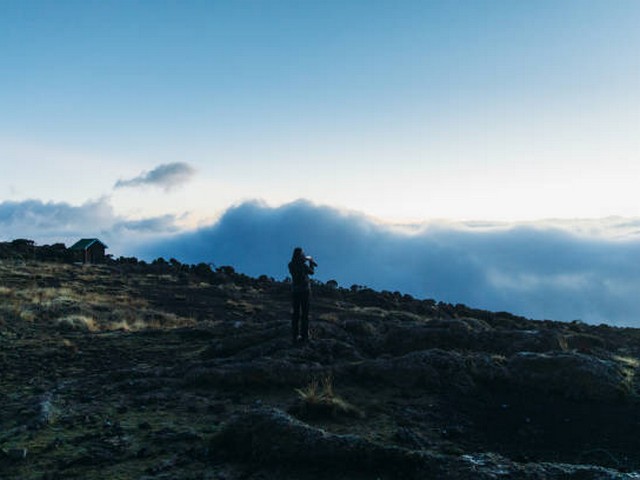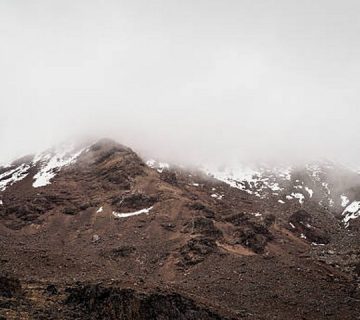How To Take High-Altitude Photos On Kilimanjaro
Capturing the Majestic Heights: A Photographer’s Guide
Imagine standing atop Africa’s highest peak, surrounded by a panoramic view that stretches for miles. The clouds are beneath you, and the air is crisp and clear. You reach for your camera because you know moments like these deserve to be captured forever. However, high-altitude photography, especially on a giant like Mount Kilimanjaro, comes with its unique set of challenges. At the Kilimanjaro Centre for Trekking and Ecotourism (KCTE), we understand this blend of adventure and artistic pursuit. In this post, we’ll guide you through the essential tips and tricks to ensure you can capture the breathtaking beauty of Kilimanjaro’s summit and the vibrant ecosystems along its slopes.
Preparing for Your Journey: Gear and Settings
Choosing the Right Equipment:
High-altitude photography requires gear that is versatile, lightweight, and robust. A DSLR or a mirrorless camera with manual settings will offer you control over your exposures, which is crucial in the diverse lighting conditions you’ll encounter. Pair it with a weather-sealed, wide-angle lens for stunning landscapes, and a good telephoto lens for capturing distant wildlife and intricate details of the mountain’s surface.
Camera Settings for High Altitude:
- Aperture: To capture the vastness, use a smaller aperture (higher f-stop number) for a greater depth of field.
- Shutter Speed: Adjust according to the scene’s motion. Use faster speeds for capturing quick-moving clouds or wildlife.
- ISO: Keep it as low as possible to reduce noise but adjust it higher when the lighting conditions demand it.
Protecting Your Gear:
The high-altitude environment on Kilimanjaro is harsh. Protect your equipment from cold and moisture by storing it in insulated, waterproof bags. Silica gel packets can help absorb any moisture that might accumulate within your camera bag.
Mastering the Art: Techniques for Stunning Photos
Understanding Light:
The light on Kilimanjaro can change dramatically, from the soft hues of early morning to the harsh midday sun. Capture the golden hours during sunrise and sunset when the light is soft and evenly diffused. This is when Kilimanjaro reveals its most magical views.
Composition Techniques:
- Rule of Thirds: Divide your frame into nine equal segments by two vertical and two horizontal lines. Place important elements along these lines or their intersections.
- Leading Lines: Use natural paths, streams, or the mountain’s ridges to guide the viewer’s eye through the image.
- Framing: Use natural elements like tree branches or rocks to frame the main subject, adding depth to your composition.
Experimenting with Perspectives:
Don’t just stick to eye-level shots. Climb atop a rock, or crouch down low to capture unique angles of Kilimanjaro’s landscapes. Remember, the best photo might be from where you least expect it.
Tips for Handling the Altitude
High-altitude photography is not just about technical skills and the right gear. The physical challenge of trekking Kilimanjaro means you need to be well-prepared for the altitude:
- Acclimatize Properly: Spend a few days at higher altitudes to get used to the reduced oxygen levels.
- Stay Hydrated and Well-Nourished: Dehydration and insufficient calorie intake can impair your cognitive functions and physical capabilities, impacting your photography.
- Keep Warm: Cold fingers can’t operate a camera effectively. Use quality gloves designed for cold-weather photography.
Kilimanjaro Through Your Lens: What to Capture
The Summit:
The summit of Kilimanjaro, Uhuru Peak, offers the most exhilarating views. Capture the iconic signboard, the glacier views, and the sunrise from the rooftop of Africa.
Flora and Fauna:
From the dense rainforests at lower altitudes to alpine deserts, Kilimanjaro hosts diverse ecosystems. Capture the unique flora like the Giant Lobelia and the elusive fauna such as the Kilimanjaro colobus monkey.
Cultural Elements:
The Chagga people living around Kilimanjaro have a rich culture. With permission, photograph local villages, traditional homes, and the friendly faces of your porters and guides.
FAQs: High-Altitude Photography on Kilimanjaro
Q: What is the best time of year to photograph Kilimanjaro?
A: The best times are during the dry seasons, from late June to October and from late December to early March.
Q: How do I prevent my camera from freezing on the summit?
A: Keep your camera inside your jacket until you’re ready to shoot, and consider using chemical hand warmers in your camera bag.
Q: Can I charge my camera batteries on the mountain?
A: Charging opportunities are limited, so bring multiple batteries and keep them warm close to your body to prolong their life.
Capture Kilimanjaro with KCTE
At Kilimanjaro Centre for Trekking and Ecotourism (KCTE), we ensure that your journey to capture the towering beauty of Kilimanjaro is as fulfilling and awe-inspiring as the images you take home. With expert guides and porters, state-of-the-art trekking logistics, and a deep respect for the local culture and environment, KCTE is your partner in this photographic adventure.
Ready to immortalize your Kilimanjaro experience through stunning photographs? Book your climb with Kilimanjaro Centre for Trekking and Ecotourism (KCTE), and let us help you reach new heights in adventure and photography.
Capture not just photos, but memories — climb Kilimanjaro with KCTE and experience the pinnacle of adventure photography!




